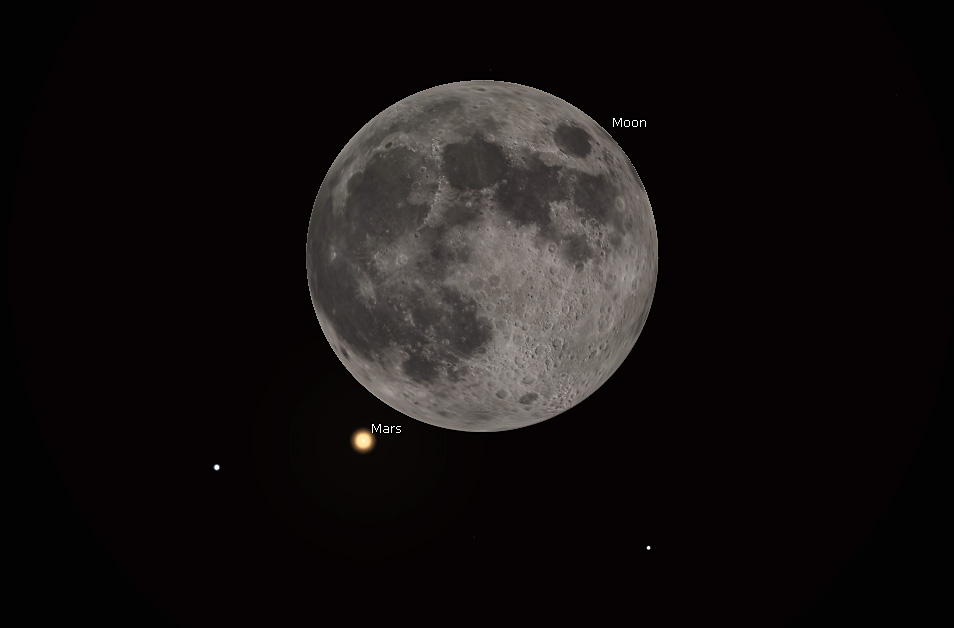The Mars Show
Ever since the early telescopic observations made by the Italian astronomer Giovanni Schiaparelli in 1877 when Mars was in opposition at 56-million-kilometres away, he is said to have seen “canali” or canals on Mars. Seeing these features gave the impression of a possible civilization. Since then the red planet has been the focus of the search for ancient life and is also the base of science fiction writers and movie makers.
By the 2030s or 2040s, humans are expected to land on this fascinating world, looking for the possibility of life that might have once existed, even at the microbial level. After all, life is life. But Mars is now in the news for other reasons, it is now a very visible object in the night sky.
Appearing as a bright-orange object rising in the northeast sky about forty-five minutes after the sun sets in the west, Mars is nicely placed amongst the bright winter constellations of Orion the Hunter, Taurus the Bull, etc. If you are still not sure where to look, any smartphone astronomy app will guide you.
So why is it so bright? Earth orbits the Sun in 365 days whereas Mars does so in 687 days. Just like the passing lane on a highway, Earth (the blue car) catches up and overtakes Mars (the red car) every 26 months. This upcoming opposition will occur on December 8 at a separation of 82 million kilometres. Over the weeks after opposition, our distance increases as we leave Mars in our rearview mirror and it slowly fades. Every seventh opposition is super close such as back in 2003 and 2020. The next opposition occurs on January 15, 2025.

Because of its proximity to earth during this opposition, Mars will be at magnitude minus 1.9 and will not reach the brightness of Jupiter's magnitude 2.5 which has happened in the past, but it is still a treat to look at through a telescope. The challenge of seeing subtle land markings depends on earth’s turbulent atmosphere and “seeing” conditions which vary from night to night.
Be sure to look at Mars the night before on December 7 as the Full Cold Moon will cover Mars for a little less than one hour. All of Canada as well as much of the US except for Alaska and the Southeastern states will see an amazing occultation. During its monthly orbit around the earth, the moon moves its width every hour across the background stars. It covers stars as seen through a telescope for as much as an hour and in rare events, does so with bright planets. This should be a fantastic photo opportunity as the disappearance and later reappearance should be quite evident.
The night of December 13th into the morning of the 14th will be the peak of the annual Geminid meteor shower. The parent of this shower is the 5-kilometre-wide asteroid 3200 Phaethon. On moonless nights, the Geminids can produce about 120 meteors per hour. However, the 70% waning moon will rise at about 9:30 local time causing those numbers to diminish throughout the night. Even though, this is a fantastic shower to witness as meteors are striking our atmosphere at only 35 km/hr. These appear as slow, graceful, and sometimes colourful streaks with occasional bright fireballs.
December 21 will signify the winter solstice in the northern hemisphere and the summer solstice in the south.
Until next month, clear skies everyone.
Gary Boyle
